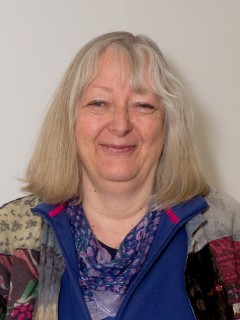Living in St Marys
Lesley Bush lived for a time in St Marys, after the Home had been closed. This is an edited transcript of an interview with Lesley. You can hear a clip of her talking on our “Memory Walk” page here https://www.milfordstreetbridgeproject.org.uk/content/memory-walk/stand-11-st-marys
“When I was four and a half my brother , sister and I and my parents moved to Salisbury and this was in 1951 and my father was Diocesan and Chaplain to the deaf at the time and cos there were no Church houses connected to parishes that he could be connected with because the the Toll Diocese was his parish and the only empty house was St Mary’s Home For The Fallen Women Of Wilts and Dorset which was empty at the time which had been run by the nuns and was at the end of St Martin’s Lane and its now part of the Technical College.
So we moved in there into this vast place with a big courtyard at the back and at the bottom of the garden was the wall that was at the edge of the end of the playground of St Martin’s School and there was this huge drop down behind this wall into the playground and when I started school there my mum use to be able to look over the wall and watch me in the playground. But at one end of this building was this huge sort of muddling laundry where the where the women in this reform home had had to work and at one wall end wall there was a huge treadmill which had obviously been some type of punishment wheel for them to walk round inside. And there were huge big long tables all stacked up with great big laundry baskets full of moth balls and great big mangles, and tubs and boilers and with with dolly pegs for doing the washing. And my mum said there were little sort of cell like rooms round the other side with little scratched messages on the wall like ‘been here eight years’ and things like that. All sorts of little sad messages scratched on the wall.
And we lived in down stairs to start off with just inside the door where the where the chapel is, and my Dad’s study was just there and we lived in the rooms there and then the nuns whose Mother House was back in Staines decided to come back so we then moved into a flat upstairs and the nuns came back in into the the home and they had the kitchens. They was huge kitchens and there was cook nuns who did all the meals there was a rather grim Mother Superior and er then we slept upstairs in a long room a dormitory room where the skylights are lights are that you can still see that was our my brother and sisters and my bedroom. And at the door beyond was some some more dormitories where the nuns slept and occasionally when they got new nuns came they would open the door at the end of our bedroom by mistake when they came up from doing their prayers and we use to scream the place down when these black figures use to appear through the door at the end. But most of the nuns were really sweet and they liked having us around, they liked having small children around. Although we were told to be sort of fairly quiet and keep out of their way, but they use to like to play with us and we use to play with them. So that was our memory of living in a Reform Home For The Fallen Women Of Wilts and Dorset.”



Comments about this page
As a child, I often wondered why my mother quickly changed the subject when I asked questions about the large house at the top of St. Ann Street; usually muttering something about ‘naughty girls’! However, when we moved to Harnham, we found out that one of our new neighbours had been billeted there during the war after being ‘bombed out’ twice in Portsmouth. This had been a particularly frightening experience for her young son whose room had been some distance away from those allocated to the rest of the family; all members eventually being resettled in one of the new council houses built when the war ended. Later, we loved to tease Vi about her time in a house for fallen women!
Add a comment about this page